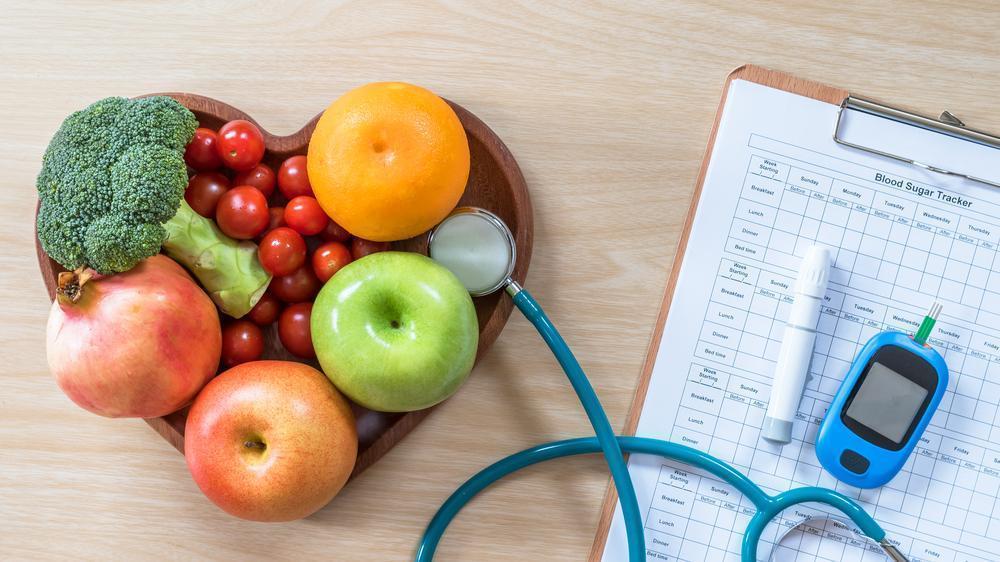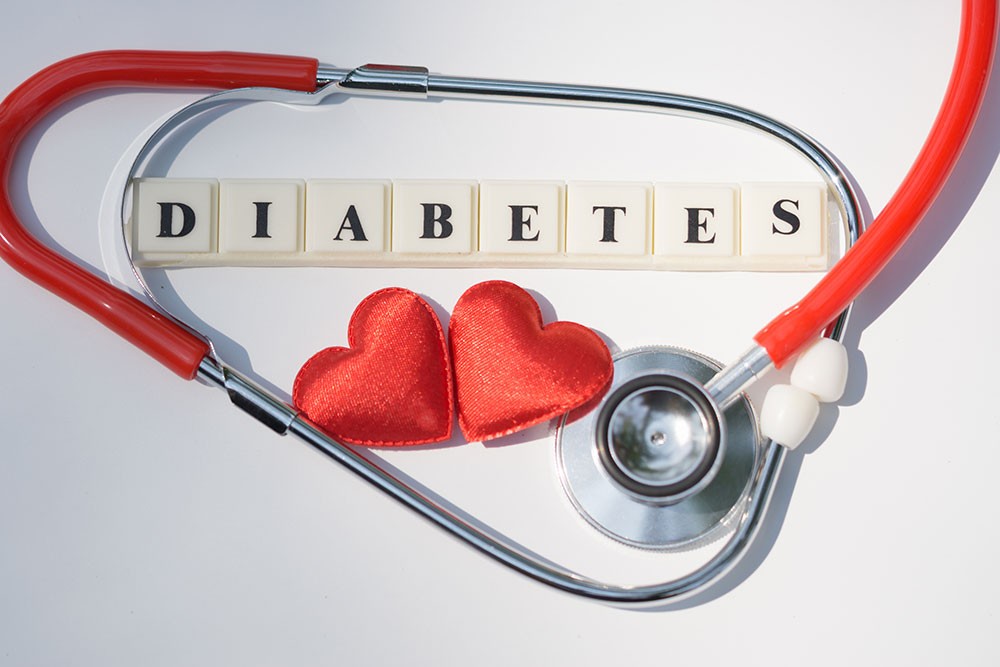Last updated on September 27th, 2022
Type 1 diabetes and celiac disease are common autoimmune diseases. The occurrence of celiac disease in type 1 diabetic patients is 6%. Celiac disease occurs in the general population in a 1% ratio. Because of the seeming link between T1D and CD, many doctors would screen for CD after a T1D diagnosis and contrarywise. Want to know the link between the two diseases? Read this article and learn more about who is at the highest risk, and the ways to cope.

Learn About Type 1 Diabetes and Celiac Disease
Type 1 diabetes is an endocrine as well as an autoimmune condition. In this, the body attacks the pancreatic cells. Then, it damages the insulin-producing cells. Insulin is a hormone carrying a majority of roles. One vital role is assisting glucose entry into the cells. There, energy comes from glucose. In the absence of insulin, body does not get energy from food products. Thus, the sugar, or glucose, remains in the blood. Some individuals with T1D get a disease diagnosis when their blood sugars are riskily high. And, they experience diabetic ketoacidosis (DKA). Type 1 diabetics might require insulin daily to keep their blood glucose levels in range.
Also, Celiac disease is an autoimmune condition. In this, there is a damage of intestinal villi. These are tiny structures in the gut accountable for nutrient absorption. And, this damage occurs due to immune system’s response to the intake of gluten.
Gluten is a protein present in rye, wheat, barley, and some oats. Other gluten-containing products may include:
- Cosmetics
- Vitamins
- Minerals and,
- Play dough.
A gluten-free diet is important for individuals with celiac disease. It helps to heal the villi and avoid further damage. Even the minimum amount of gluten might turn challenging.
Also Read: Normal sugar level in human body

How to Diagnose Type 1 Diabetes?
In this, body fails to use glucose as energy. This excessive glucose accumulates in the blood. And, the body tries to remove it. Signs of increase in blood glucose levels (hyperglycemia) include:
- Excessive thirst
- Weight loss
- Irritability
- Fatigue
- Bedwetting (in kids)
- Excessive urination
- Excessive hunger
- Confusion
Advanced signs of hyperglycemia might be a warning indication. This may indicate that the body is entering a phase of DKA. Its warning signs can be:
- deep, fast, difficult breathing
- nausea, vomiting
- abdominal pain (in children)
- a fruity odor in breath due to exhaled acetone.
DKA is a medical emergency healthy problem. It requires an immediate attention in the hospital. People should instantly receive a correction of:
- high blood sugar and acidosis
- treatment of hypokalemia (low potassium)
- volume satiation
Also Read: What is the normal Hba1c level?
Signs of Celiac Disease
Celiac disease might be hard to diagnose. It often occurs in a diverse way in diverse people and at diverse ages. Few individuals with CD have no signs at all. Others may experience an array of signs that are gastrointestinal or all over the body. Some common signs in kids include:
- Weight loss
- Vomiting
- Loose stools
- Constipation
- Fatigue
- Delayed growth and puberty
- Abdominal bloating and pain
- Failure to survive
- Iron-deficiency anemia
- Attention deficit hyperactivity disorder (ADHD)
- Irritation and behavioral problems
- Dental enamel defects of the permanent teeth
Also Read: Metsmall 500 side effects
Signs that link with vitamin deficiencies (such as vitamin D deficiency)
In adults, the signs may include:
- Fatigue
- Unexplained iron-deficiency anemia
- Osteoporosis
- Recurrent miscarriage
- Fatty liver
- Arthritis
- Dermatitis herpetiformis (itchy skin rash)
- Seizures or migraines
- Depression or anxiety
- Bone or joint pain
- Missed menstrual periods
- Peripheral neuropathy (tingling, numbness, or pain in the hands and feet)
- Canker sores inside the mouth
Also Read: How to Reduce Lower Blood Sugar Level Immediately?
What Comes First?
If a person has one of these autoimmune diseases, it does not imply that he or she would develop another. And if a person develops one after the other, he or she might not know that they have it right away. Most of the time, individuals with T1D get diagnosed with CD when they don’t have signs. There might be confusion between the signs of CD and T1D.
What is the Correlation between Diabetes and Celiac Disease?
Type 1 diabetes and CD have superimposing factors. These may include environmental and genetic risk factors. Various immune-related genes are present in both CD and T1D. Studies are not consistent. However, studies indicate that an increased risk of developing T1D and CD in people having cereal. That too, in individuals:
- with ages below 4 months or above 7 months
- those were not breastfed
- those with a history of viral infections, particularly rotavirus.
T1D precedes CD. And, one autoimmune disease might trigger the other. Type 1 diabetics are at an increased risk of other autoimmune conditions because of:
- genetic factors
- environmental factors
- immunological factors.
Diagnosis
Screening of type 1 diabetics is a must for celiac disease. That too, annually for the first four years after diagnosis. And, after that, every one to two years for the following 6 years. The majority of type 1 diabetics would not show any signs of CD. Thus, an annual blood work to test for antibodies helps. Counselling individuals with CD about the signs of T1D is also vital.
Also Read: Can Diabetes be Reversed Permanently?
Ways to Cope With Type 1 Diabetes and Celiac Disease
Both celiac disease and type 1 diabetes demand dietary management and other tasks. These may include:
- blood sugar testing
- data analysis
- insulin requirements.
It is simple to get speechless, but with extra planning, a person can live a healthy life without feeling restricted. A person must be prepared. He or she must know:
- where he or she is going
- what he or she is doing
- how that will impact his or her blood sugar both short- and long-term.
A person can take an appetizer or a snack to parties or social events. Also, using technology (like an insulin pump and continuous glucose monitor), he or she can figure out:
- how certain foods would impact blood sugar
- how to adjust insulin to compensate.
Living with T1D and CD is devastating at times. However, people can eat in plenty of restaurants and satisfy their cravings with foods they love. There are a lot of great companies, restaurants, and local bakeries that prepare gluten-free options. People must remember “the key is moderation”. For example, rather than eating a giant-size piece of gluten-free cake, have a small piece. People must always remember what works for them and what keeps their blood sugars in a safe range.
Also Read: How to control sugar level home remedies?
Managing Blood Sugars on a Gluten-Free Diet
A lot of nutritious whole foods are naturally gluten-free. These may involve:
- Fruits and veggies
- Gluten-free whole grains (amaranth, millet, quinoa, buckwheat, brown rice, oats)
- Most cheeses
- Yogurt
- Nuts, seeds
- Legumes
- Eggs, chicken, meat, fish, turkey, etc.
Food combinations that aid in glucose control includes foods with fiber, protein, and fat at every meal. This combination may help in avoiding large variations in blood sugar.
For instance, a person may eat a taco bowl. This includes:
- one cup of brown rice
- two servings of roasted veggies
- three to four ounces of lean protein like grilled chicken, shrimp, or tofu
- some sliced avocado (portions and servings differs depending upon a person’s needs).
It is important to read labels while having packaged foods. This makes sure that they are gluten-free. Take care that just because something is gluten-free does not indicate that it’s a “health food.”
If a person is type 1 diabetic, he or she must know the carb amounts of all foods. Also, he or she must aim to opt for options containing:
- fiber
- fat
- protein
This helps in a blood sugar control. If a person needs help with meal planning, visit a registered dietitian specializing in T1D and CD.
Summary
There is definitely a link between type 1 diabetes and celiac disease. Yet, just because a person has one doesn’t guarantee he or she will develop the other. Genetics, environment, and immunology are all the linking factors that connect T1D and CD. If a person has T1D or CD, his or her doctor will likely monitor for the other with blood work. A person would require managing the blood sugar on a gluten-free diet. Make sure to receive education from a registered dietitian. With support and additional planning, he or she may live a healthy life without deficiency.
FAQs:
Does gluten-free flour elevate blood sugar?
A lot of gluten-free products also comprise less fiber. This may increase the absorption of the carbs, resulting in increased blood sugar.
How does gluten have an effect on diabetes?
People with the least gluten in their diets have a slightly higher risk of developing type 2 diabetes.
Can type 1 diabetes have gluten-free?
With a dietitian’s direction, patients with type 1 diabetes and celiac disease may make healthful gluten-free food preferences. A successful dietary counseling must improve nutrition and diabetes management.
How does celiac disease have an impact on type 1 diabetes?
A person with celiac disease and type 1 diabetes has a difficulty in managing the disease. The gluten from foods results in gut inflammation. And, this alters the absorption of food. This brings about blood glucose variations with higher intensity.
References:
- https://www.verywellhealth.com/diabetes-and-celiac-disease-is-there-a-connection-5207293
- https://www.diabetes.org.uk/guide-to-diabetes/enjoy-food/eating-with-diabetes/managing-other-medical-conditions/coeliac-disease-diabetes
Last Updated on by Dr. Damanjit Duggal
Disclaimer
This site provides educational content; however, it is not a substitute for professional medical guidance. Readers should consult their healthcare professional for personalised guidance. We work hard to provide accurate and helpful information. Your well-being is important to us, and we value your feedback. To learn more, visit our editorial policy page for details on our content guidelines and the content creation process.

 English
English













